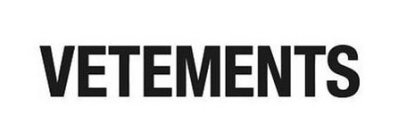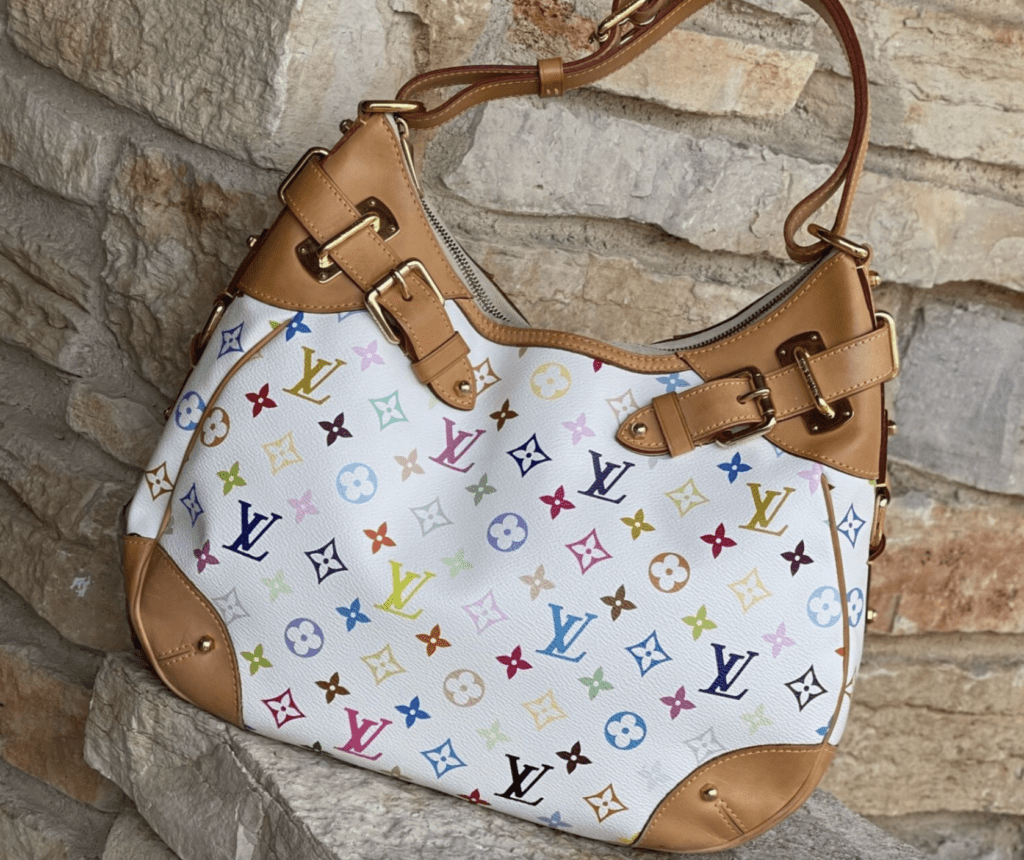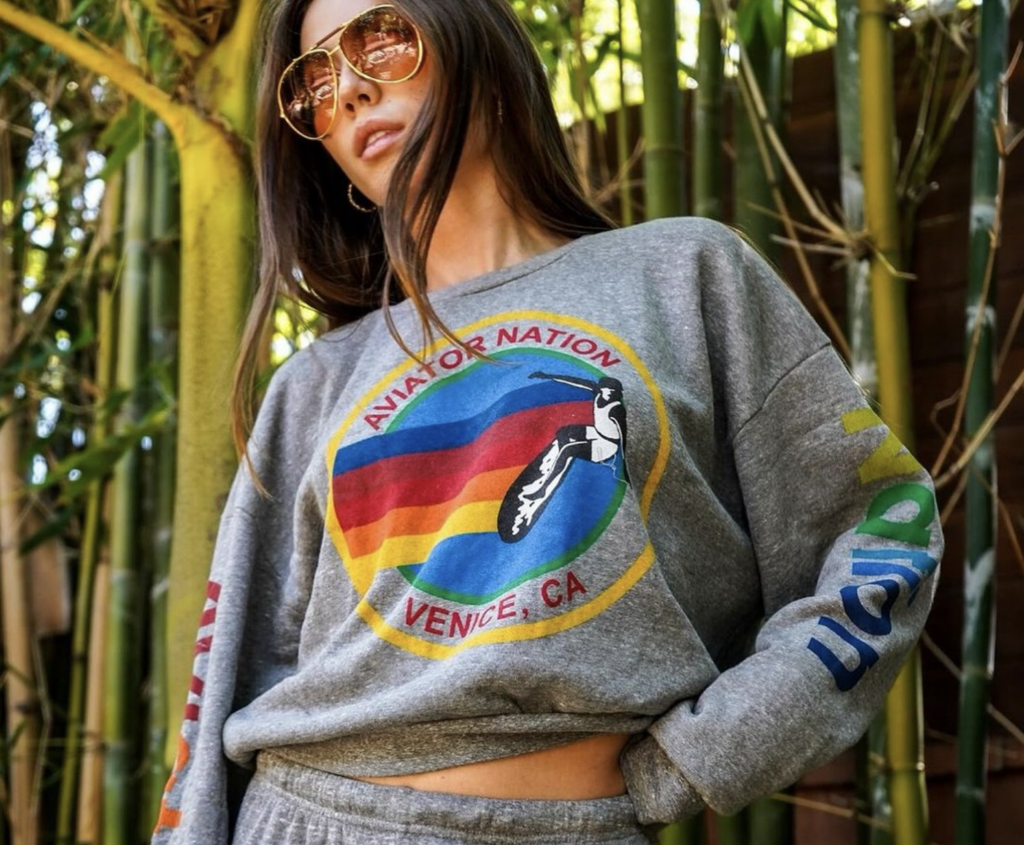Vetements has failed to convince the Trademark Trial and Appeal Board (“TTAB”) to overturn an earlier refusal to register its name for use on apparel and related “online retail store services.” The Zurich-based brand lodged an appeal with the TTAB last year after the U.S. Patent and Trademark Office (“USPTO”) refused to green-light two applications for registration for its VETEMENTS trademarks on the basis that when it is used on certain goods/services, namely, clothing and related retail services, the term – which means “clothing” in English – is generic, and thus, fails to indicate the source of those goods/services. In a non-precedential opinion dated April 21, the TTAB affirmed the final decision of the USPTO, marking the latest loss for what was – until somewhat recently – one of fashion’s most hyped brands.
For a bit of background: In June 2020, Vetements sought registrations for the VETEMENTS word mark and a stylized version of that mark in Class 25 (“shirts, skirts, sweaters, coats, jackets, suits, caps being headwear, headwear, hats, hoods, visors being headwear, scarves, gloves, shoes, boots, waist belts, T-shirts, pants, blouses, dresses”) and Class 35 (“online retail store services” for the goods listed above). In both cases, it submitted a translation, stating that in English, the mark means “clothing,” and amended both applications to submit a claim of acquired distinctiveness. After being handed a loss from the USPTO, the Guram Gvasalia-run brand appealed to the TTAB, which affirmed the USPTO’s genericness and “mere descriptiveness” refusals, as well as the examining attorney’s determination that Vetements’ failed to establish acquired distinctiveness in light of the highly descriptive nature of the mark.
Genericness & Doctrine of Foreign Equivalents
Considering the issue of genericness, a panel of Administrative Trademark Judges for the TTAB cited the relevant two-step inquiry: “(1) What is the genus of goods or services at issue; and (2) Is the term understood by the relevant public primarily to refer to that genus of goods or services?” In terms of the first prong, the Judges stated that “any term that the relevant public uses or understands to refer to the genus of goods or services, or a key aspect or central focus or subcategory of the genus, is generic.” Here, they held that it is “undisputed that the identifications of Class 25 and Class 35 goods/services define the genus of goods/services at issue.”
As for whether the consuming public of Vetements’ clothing and online retail store services understands the term VETEMENTS to refer to the Class 25 and 35 goods/services, the Judges said that “there is no question on this record that VETEMENTS is a French language term that literally and directly translates into English as ‘clothing.’” It further is undisputed that “consumers of Vetements’ goods and services, as well as media outlets and commentators in the clothing and fashion industries recognize this meaning of the proposed marks.” (The Judges cited articles from the fashion media, including one that referred to Vetements as “a label whose generic name …,” as well as statements from the brand, itself, as evidence to support their finding of genericness.)

Finally, considering the doctrine of foreign equivalents, the Judges determined that there is “no evidence” to suggest that “the translation [here] is inaccurate, that ‘vetements’ is so obscure that it would not be easily recognized and translated by French speakers in the U.S., or that it is an idiom that is not equivalent to its direct English translation.” In fact, the Judges asserted that “there can be no doubt that French is a common, modern language [and that] consumers familiar with French are thus likely to ‘stop and translate’ VETEMENTS when encountering it used in connection with [the brand’s] clothing and related retail services.” Still yet, the Judges asserted that Vetements’ “minimally stylized mark [does not] create a commercial impression that is separate from the French language term for ‘clothing.’”
As such (and despite Vetements’ argument that its proposed marks are not likely to be translated into English and that the doctrine of foreign equivalents does not apply to its marks), the Judges held that “the relevant public understands ‘vetements’ as a term that primarily refers to a genus of clothing items and online retail store services featuring clothing items – and that the proposed marks are generic.”
Mere Descriptiveness
The Judges found that “the proposed VETEMENTS marks [are] highly descriptive in view of the entire record and for the reasons set out in the genericness discussion. The clarity, quality and quantity of the examining attorney’s evidence persuades us that a mental leap is not needed to determine that the proposed marks refer to [Vetements’] identified goods and services. Because of the proposed marks’ highly descriptive nature, [Vetements] has a higher burden to establish acquired distinctiveness.”
Acquired Distinctiveness
Vetements amended its applications to claim “acquired distinctiveness in the alternative,” but ultimately, failed to demonstrate (via the factors in Converse, Inc. v. ITC) that “relevant consumers perceive the [marks] as identifying the producer or source of the products.” Among other things, the Judges found that …
– While Vetements has been using the proposed marks since 2014 in U.S. commerce in connection with the identified goods and services, evidence of such use “is not particularly persuasive … given the high degree of descriptiveness of the proposed marks.”
– Vetements advertised its goods and services under the proposed marks “at fashion events, on social media and in store signage and displays,” but did not disclose its advertising expenditures or indicate any context of activities and expenditures of other clothiers. Moreover, “there also is no evidence regarding the number of advertisements [Vetements] has run on social media, how long [it] has promoted its goods/services on social media, or U.S. consumer exposure” to such advertising.
– Vetements has 4.1 million followers on Instagram, with 15 percent of the audience located in the U.S. However, the “absence of information specific to U.S. consumers aside from their general number reduces the persuasive value of this declaration evidence.”
– The number of examples of media coverage cited by Vetements is “not a significant amount of unsolicited media coverage given that [the company] has been using the applied-for marks since 2014. At the same time, the record does not include any information regarding the circulation of the publications Vetements cites or article impressions, thereby, “further reducing the weight of this evidence.”
The Bottom Line: Affirming the USPTO’s refusal, the Judges determined that the VETEMENTS marks are generic for the goods and services at issue. They further found that VETEMENTS is “highly descriptive of [the company’s] goods and services and [it] has not established that the designations have acquired distinctiveness as marks.”











